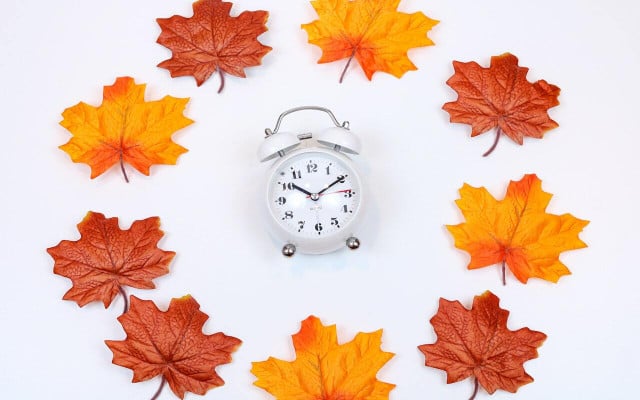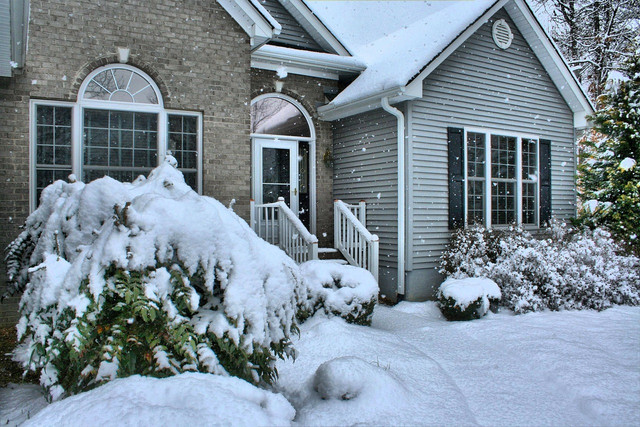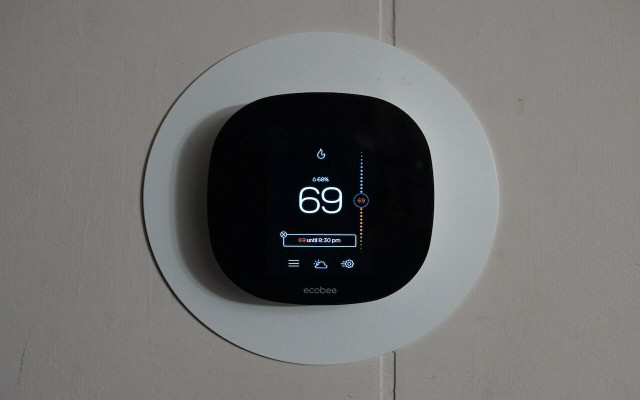Knowing when to start heating your home in the colder months isn’t as straightforward as you might think. These tips should help you know when to turn your heat on in order to responsibly look after your home and environment.
It’s tempting to turn your heating on as soon as the colder months creep around the corner. However, there are some tips you can follow to keep your bills from soaring, while keeping the environmental cost of your energy usage in mind. Learn when to turn your heat on here.
1. Wait Until Daylight Savings

(Foto: CC0 / Unsplash / Katie Harp)
Daylight savings, or DST, started in Germany in 1916 as an effort to save energy. In the US and Canada, DST has been adopted and revisited many times over the years since then.
Although not all states, territories, or provinces follow this schedule, it is still a useful guide for knowing when to turn your heating on. While there may be colder days before the clocks change, they usually don’t last too long.
The current DST schedule runs from the second Sunday of March to the first Sunday of November. However, if you live in a milder climate and want to challenge yourself, you can alternatively try to aim for December 1. According to the meteorological calendar, this is the official start to winter.
Aiming for a certain date will help you only turn your heating on when you need it.
2. Wait Until a Certain Temperature



(Foto: CC0 / Pixabay / JamesDeMers)
Another, and perhaps a more common way of deciding when to turn on your heating, is to take your cue from the weather outside. Some people wait to turn their heating on until the first snowfall or for the first full day below a certain temperature.
Find out which temperature you find to be truly uncomfortable. Once the outside temperature drops below this point, you should permit yourself the luxury of turning up the heat.
However, this method may mean that you’re turning your heating on earlier than you need to because of a few cold snaps. To counteract this, you can turn your heating back off if the temperature warms up again before the end of the cold season.
Tip: If you have a smart thermostat, you could have it set to automatically turn the heat on and off depending on the ambient indoor temperature.
3. Know What Temperature Your Home Should Be
This really depends on personal preference, however as a guide for those looking to keep their energy consumption to a minimum, the recommended thermostat setting for winter is between 64 and 70 °F.
If you have a programmable thermostat, the U.S. Department of Energy advises that you should set your thermostat back 7 °–10 °F from its normal setting for 8 hours a day. You can either do this when you’re away from home or asleep, to really conserve on energy.
However, having the temperature set too low can be a health risk for some. The World Health Organization (WHO) states that an ambient air temperature below 53 °F may pose a health risk for groups such as the elderly, the sick, the handicapped and young children.
If you’re primarily concerned with limiting the amount of energy you use in the winter, some combination of the above two methods may be best for you. However, you should never let your health deteriorate in the name of environmentalism. There are many more ways to conserve energy other than turning your heat way down, including these following tips for keeping warm.
4. There Are More Ways to Delay Turning on the Heat



(Foto: CC0 / Pixabay / Pexels)
There are many things you can do to help delay the need to turn your heating on. Here are some simple and easy tips to help you stay warm:
- Putting on an extra layer of clothing or wearing a thermal underlayer will help you stay warmer.
- Adding a hot water bottle, a cozy blanket and a homemade heating pad to your evening wind-down routine.
- Using a smaller space heater if you tend to only use one room during the day. Check out Are Space Heater Energy Efficient? first, to avoid high electricity costs at the end of the month.
- Placing draft excluders along the cracks of your doors.
- Let the sun naturally warm your home by opening the curtains.
- Draw your curtains to keep the heat in at night. Consider investing in some thicker curtains, or simply doubling up on what you already have.
- Drink a hot beverage, like calming tea, fair trade coffee, or homemade hot cocoa.
- If certain parts of your body, like your feet or hands, cool down so much that it makes you uncomfortable, learn how to keep your feet warm in winter.
5. What to Check Before Turning on the Heat



(Foto: CC0 / Unsplash / Sean D)
1. Check Air Filters
Keeping your air filter clean and replacing it when it’s worn out will help keep your heating system running efficiently and economically. Investing in a higher quality pleated filter can also save you money in the long-run as these will last you an entire season rather than just one month, as is the case with cheaper fiberglass air filters.
You can tell that your air filter need replacing when you notice:
- Your heating system is making more noise than usual
- Lots of dust around your home, especially on vents
- There is a smell of burning, often caused by accumulated dust
2. Check Your Furnace
It’s always best to stay on the safe side when it comes to maintaining your furnace, since any heating appliance can be potentially dangerous.
Check the breaker to make sure it has power. Yours may have a defrost feature which may delay the heating from turning on to full power for a few hours.
3. Test Your Thermostat
Thermostats not only set the temperature of your home, but are your key to saving energy as well. So naturally, you’ll want to make sure your thermostat is giving you accurate readings in order for you to warm your home without wasting electricity.
You can easily do this by hanging a glass thermometer beside your thermostat, preferably not directly touching the wall. Wait a few minutes for the reading to settle and then compare.
If there’s more than 1 degree of difference, clean your thermostat and take another reading before consulting a heating specialist who can either fix or replace your device.
4. Locate and Seal Any Cracks or Drafts
There’s no point in trying to keep your electricity consumption to a minimum elsewhere if your home is full of drafts. The most common places to find drafts are vents, electrical outlets, and door and window panes. Now you know where to look, here are a few tricks for how to find them:
- Incense: Burn an incense stick or cone close to where you suspect a draft. Watch the smoke to see if it is disturbed at all.
- Paper: If you can easily slide a piece of paper into a crack where you think there might be a draft, you’ve almost certainly found one.
- Hand: Just feel around for a draft. It might be help to use the back of your hand to find slighter drafts.
If you notice a draft at any time during the colder season, block it up immediately with either curtains, a bit of old newspaper, or draft excluders. Drafts are easier to find on cold and windy days.
Read more:
- How to Lower the Humidity in Your House: Tips for Avoiding Mold
- Summer Insulation: How to Insulate Windows to Keep Heat Out
- How to Clean Air Naturally and Why Your Home Needs It
Important Information regarding Health-related Topics.
** Links to retailers marked with ** or underlined orange are partially partner links: If you buy here, you actively support Utopia.org, because we will receive a small part of the sales proceeds. More info.Do you like this post?






